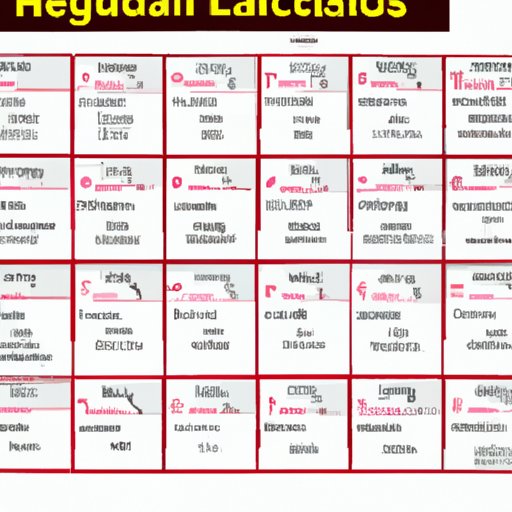Exploring which Elements Have the Most Similar Chemical Properties
The periodic table is an essential tool for chemists, allowing them to understand the properties of various elements. The ability to predict how these elements will behave in different conditions can facilitate important advances in numerous fields. Recently, scientists have begun to focus on identifying which elements have similar chemical properties. In this article, we will explore some of the common chemical properties that contribute to elements with similar properties, specific groups of elements that have distinct chemical properties and similarities, different classifications of elements based on their electronic configurations, and how early theories of elements and compounds contributed to our current understanding of chemical properties.
Periodic Trends
The periodic table is a table that shows all elements that can be found on Earth and their properties. The table is arranged in order of increasing atomic number, with elements grouped into periods and blocks based on similarities in their electron configurations. Elements that are close to each other on the periodic table have similar chemical properties because they share the same number of outer-shell electrons.
Periodic trends are the patterns seen when various properties of the elements change according to their position in the periodic table. These trends impact chemical behavior by determining how easy it is for an atom to give or take away electrons. A few common periodic trends include electronegativity, ionization energy, and atomic radius.
Chemical Properties
Three of the most common chemical properties that contribute to elements with similar properties are electronegativity, ionization energy, and atomic radius.
Electronegativity is a measure of an atom’s ability to attract shared electrons to itself and is one way of describing how an atom behaves in a chemical reaction. Elements with high electronegativity draw electrons toward themselves, effectively making them negative, while elements with low electronegativity share their electrons more equally with other atoms. Therefore, elements with similar electronegativity tend to react similarly in chemical reactions.
Ionization energy is the energy required to remove an electron from an atom or a positive ion and is influenced by atomic size. Elements with a lower ionization energy will tend to form positive ions more easily than elements with higher ionization energies.
Atomic radius is the distance between an atom’s nucleus and its valence electrons. Elements with a larger atomic radius tend to be more reactive because they have more space in their outer shells, making them more likely to give away electrons.
Specific Groups
The periodic table is divided into different groups that have similar chemical properties. Three groups that are particularly interesting are alkali metals, halogens, and noble gases.
Alkali metals are found in group 1 of the periodic table. These elements have a single electron in their outermost shell and are incredibly reactive – in fact, they can even explode when they come in contact with water! Elements in this group include lithium, sodium, and potassium.
Halogens are found in group 17 of the periodic table, and elements in this group are incredibly reactive nonmetals. They have seven electrons in their outer shell, so they tend to gain an electron in reactions and form negatively charged ions. Chlorine, fluorine, and bromine are examples of halogens.
Noble gases are found in group 18 of the periodic table and are known for their stability because they have a full outer shell, meaning they don’t form chemical bonds readily. Elements in this group include helium, neon, and argon.
Different Classifications
Elements are classified based on their electronic configurations. The arrangement of an atom’s electrons is unique and plays a significant role in determining its chemical properties. Understanding how electronic configurations are classified can be useful for predicting how elements will behave in different chemical reactions.
The classification systems that have been used for elements have changed over time. In the nineteenth century, Mendeleev used atomic weight as the basis of his classification system, organizing elements in columns that had similar chemical properties. However, as our understanding of atoms and electronic structure has improved, other classification schemes have arisen. For example, elements can now be classified based on their electron configuration or their position in the periodic table.
Historical Perspective
Our current understanding of the properties of elements and the periodic table has grown out of a long history of research by some of the world’s most renowned scientists. For example, in the early 1800s, Dalton developed his atomic theory, which proposed that all matter is made up of small, indivisible atoms. Scientists then began studying the properties of individual atoms, leading to the creation of the most famous of the scientists, Dmitri Mendeleev.
Mendeleev wanted to explore if there was a pattern to the elements, leading him to create the periodic table that would group elements based on their properties. His table was so successful that he was able to predict properties for elements not yet discovered.
Conclusion
Knowing which elements have similar chemical properties is essential for chemists, as it allows them to predict how elements will behave in different chemical reactions, as well as creating new elements. This article explored some of the common chemical properties that contribute to elements with similar properties, specific groups of elements that have distinct chemical properties and similarities, different classifications of elements based on their electronic configurations, and how early theories of elements and compounds contributed to our current understanding of chemical properties.
